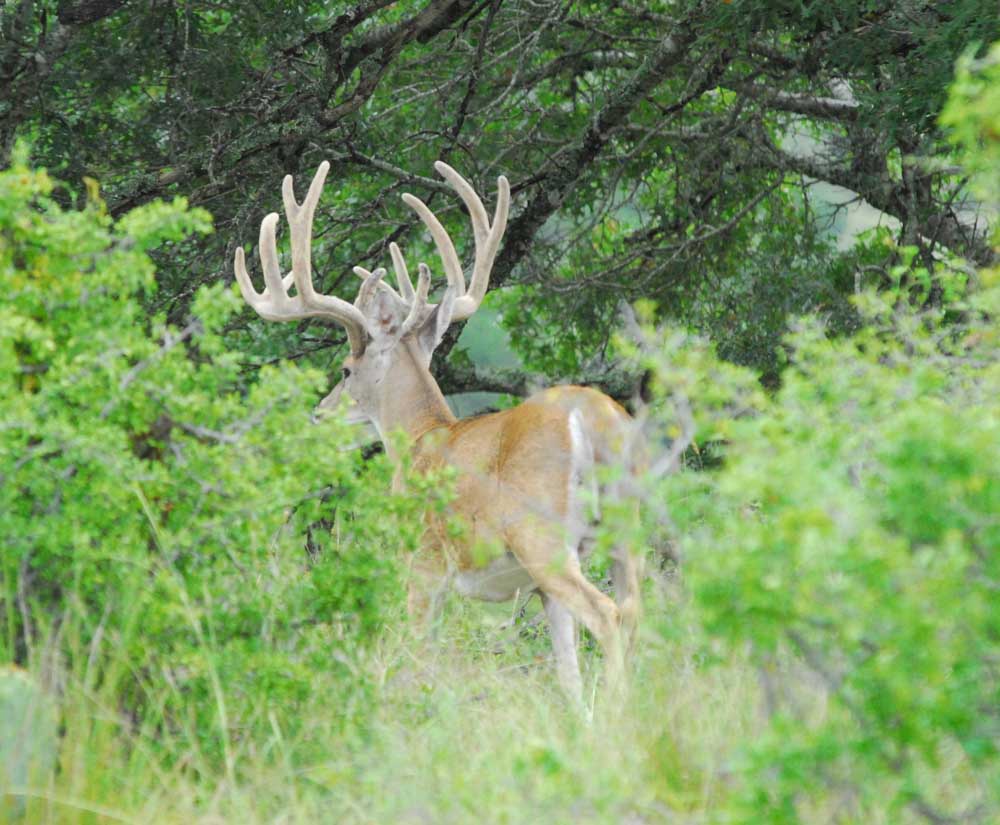Spotlight counts provide information and are fun
Published 4:58 pm Saturday, September 22, 2018

- One of the advantages of pre-season incidental and spotlight counts is that hunters might see deer that are not coming to feeders where cameras are set up. It also helps get an idea on the number of does in the area. (Steve Knight/Staff)
CAMP VERDE — There is no doubt Kerr County and the rest of the Texas Hill Country needed the rain, but did the drought-breaking downpour have to start the moment I was about to stick my arm out the truck window for two hours on the first of three nights of spotlight deer counts.
Prior to the planned count, Camp Verde Ranch had received about 12 inches of rainfall for all of 2018. By the time I left the ranch, the total was up to 16 inches and has since climbed to 20-plus.
At Camp Verde Ranch, spotlight counts are part of the process for getting annual Managed Lands Deer permits from Texas Parks and Wildlife Department, but anyone who has a lease that is managed to any degree or just wants to know what is out there should make a few rounds with a spotlight, pen and paper.
To do a spotlight count by TPWD standards, there are guidelines. The most arduous is developing a route and determining how much of the ranch is visible on that route. That is figured on a daytime drive by stopping every tenth of a mile to see how far you can see out the truck window. At Camp Verde, it was determined the 5-mile-plus route provided a view of about a quarter of the ranch. That is important when figuring final counts because the count comes with a multiplier of 3.7 to determine an estimated herd size.
We did two counts each day over a three-day period. The first, an incidental count, ended about an hour before sunset. Some people do their incidental count at first light.
The actual spotlight count began at sunset. With spotlights running out both sides of the truck, we eased around the route at a steady speed making note of each buck, doe, fawn and undetermined deer we came across. The results of the counts are sent to the regional TPWD biologist who runs them through a computer program to determine a recommended harvest size, including how many bucks and does are to be taken. In an effort to go from a deer to an acre to a deer to 5 or 6 acres, the recommendation in recent years has been upward of 200 deer a year with the majority being does. Taking more than 750 deer in a four-year period, the right deer for the plan, is the hard part of management.
The first night was literally a wash. With more than an inch of raining falling during the two-hour count, it was not surprising that we did not see much. The deer were hiding under the cedars out of view.
The next two nights produced more than 120 each night. The good news was that the buck/doe ratio was pretty close. Hunters know they need to kill doe, but most are reluctant to because sitting at a blind they sometimes get a skewed view of how many does they have. Thinking they do not have that many, they are often reluctant to shoot.
The one thing to remember about the counts is that they are not actual counts, but provide trends from one year to the next. I think TPWD requires three years of data for MLDPs. The more years you collect to compare, the better.
Last year it was recommended that about a 100 does be taken out of the 180 permits issued. Because of the Hill Country acorn crop, we seldom saw any at the feeders during the season. Hunters had to be creative setting with pop-up blinds, tripods and even just sitting on the ground to get it done.
The bad news was our fawn crop was low. That, however, was offset by the number of undetermines, which on almost any ranch with any vegetation is going to be the largest number. Based on the number of fawns that popped up around feeders last season, it showed it would seem many of those undetermines were fawns. It will be interesting to see how it plays out this fall.
While the run is supposed to be done without stopping as much as possible, that is almost impossible. Come around any corner and spot a good buck or two and the brake lights are going to come on. You would not be a deer hunter if you did not take a longer look.
At Camp Verde there are cameras set up on every feeder and while they provide pictures of a lot of bucks, the spotlight count shows they are not getting all of them. Getting to see some big bucks that may not come to feeders early in the year before they scatter is the payoff of the count for any hunter whether it is official or just exploratory.
Each night we saw some excellent bucks. Some we saw last year and some are newbies. We also saw a lot of up-and-comers that we will be watching for in the future.
The final count will come during the season with observations from the blind. Hunters will not only be looking for a deer to shoot, but also young bucks that are up-and-coming and the number of does hanging around.






